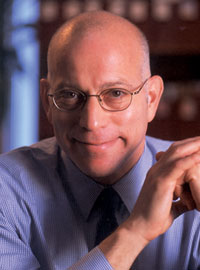Last year, every $1 increase in Morgan Stanley’s stock price was potentially worth $128,756 more to the bank’s CEO, James Gorman, than it would have been two years earlier. The bigger opportunity — a $2 million potential bonanza, based on the run up in Morgan Stanley’s shares since the grant date — can’t be detected in the summary compensation table of the bank’s 2014 proxy statement, where the CEO’s stock and options are valued $2.5 million lower than in 2011.
The difference resides in the structuring of Gorman’s performance shares, stock awards that are supposed to be earned based on achieving pre-set criteria. The CEO’s 2013 pay package makes him eligible for a substantially larger “maximum” award than the company’s “target,” and more than double the maximum in either of the two previous years. Only the target value of performance shares shows up in the summary table. Gorman also got more options, which are reflected in the table.
Related: The High-Stakes Fight Over How to Measure CEO Pay
In October 2012, Morgan Stanley’s board hired Pay Governance LLC Managing Director Ira Kay as its executive-compensation consultant and then set Gorman’s pay for 2013 at $14.4 million, not counting the maximum opportunity. Morgan Stanley is no sure bet to achieve three years of shareholder returns necessary to pay out — management failed to meet its goals in 2012, and earned 62.5 percent of target last year, according to the proxy — but the packaging shows how an executive is paid can be as important as how much.
“Compensation design decisions can have a major impact on award values, and people are pretty much in the dark today on how to measure that,” says Jack Zwingli, chief executive of Incentive Lab, a data analytics firm that models the probable future value of performance awards.
After four years in business, Kay’s firm advises one out of every 10 of the Standard & Poor’s 500 company boards. His personal roster of clients includes Alcoa, DirecTV, Wal-Mart and a dozen others. Yet the secret ingredient in Kay’s pay formula is available to any of his competitors: It’s stock, and a lot of it.
“Compensation consulting, based on my long experience, is the world’s second-oldest profession and Ira Kay is one of its most colorful practitioners,” says Graef “Bud” Crystal, the 80-year-old retired pay professional and author of In Search of Excess: The Overcompensation of American Executives. “His arguments always seem to center around, ‘You need to pay executives a lot of money.’“
‘Always Worried About Money’
Kay’s father was a used-car salesman, and his grandfather sewed women’s dresses in a union shop, as he grew up in the middle-class neighborhood of Lynbrook, New York, according to interviews with Kay, friends, clients and former business associates. He dreamed of becoming a labor organizer, he said.
Upon enrolling in the New York State School of Industrial and Labor Relations at Cornell University in 1968, Kay participated in the radical campus politics of Students for a Democratic Society, studied Marxist economics and “always worried about money,” college schoolmate Bruce Raynor said in an interview.
During his freshman year, Kay said, he abruptly realized organized labor was in decline. “Oh my God! I chose a dying field,” he said during an interview last fall.

Ira Kay
“The labor movement was strong and thriving and it was the force for social change,” responds Raynor, who went onto a five-decade career as a union boss, including organizing efforts at the J.P. Stevens textile mill in North Carolina that inspired the 1979 film “Norma Rae” starring Sally Fields.
Related: The Man Pushing CEO Pay to the Stratosphere
Kay, now 63, pursued a master’s degree and a Ph.D. in labor economics at Wayne State University in Detroit, with the help of a grant from the U.S. Labor Department’s Office of Manpower Administration.
“Ira, somewhere in graduate school, had a revelation,” says Raynor, “and went into an incredibly controversial and questionable science, finding rationales for exorbitant pay for corporate officers, and justifying the interests of management over the interests of other constituencies of public corporations, such as employees and shareholders.”
A History with Morgan Stanley
Early last decade, Morgan Stanley hired Kay for the first time, as an expert witness to defend the securities firm against a sexual discrimination lawsuit brought by the U.S. Equal Employment Opportunity Commission on behalf of former derivatives trader Allison Schieffelin, and several other women who worked for the bank.
Kay, by then the executive-compensation practice leader at Watson Wyatt & Co., planned to testify as a labor economist who would show the investment bank was “careful” to pay and promote consistent with industry practices, according to a defense brief filed in court. Magistrate Judge Ronald Ellis ruled industry practices were “irrelevant to a determination of whether the company discriminated.” He disqualified Kay’s testimony as “unhelpful” and “superfluous,” over Morgan Stanley’s objections.
The securities firm settled by paying $54 million under a July 2004 consent decree that found no wrongdoing but required the bank to train its managers on discrimination laws and seek to promote more women. Schieffelin said she was unable to comment under her agreement with the bank.
As the Morgan case wrapped up, Kay was invited to participate in a working group organized by the Conference Board big business group to examine whether compensation consultants were tainted by conflicts of interest when representing both boards and management. Despite a recommendation by the National Association of Corporate Directors to “make independence a bedrock of compensation-committee governance,” the Kay group issued a 2005 report approving the continued use of one shared consultant, albeit hired by the board.
Charles Elson, director of the University of Delaware’s John L. Weinberg Center for Corporate Governance argued against the recommendation and co-authored a dissent saying board and management should not share pay consultants. Kay “was very mad,” Elson recounts. “Ira would say in meetings, ‘You’re the guy who is trying to destroy our business.’ I said, ‘Ira, in the end, I think you’re going to be happy. You’re not going to have to deal with the overhead and conflicts of a bigger organization.’”
‘A Phenomenon’
One evening last October, Kay looked to be the picture of success over dinner near his midtown Manhattan home. The former Watson Wyatt executive and two partners at rival Towers Perrin formed Pay Governance in 2010 after their employers merged as Towers Watson. No longer a ‘60s campus radical or a consultant working for others, he is managing director of a thriving business.
Dressed in a checked Brooks Brothers shirt with dark suit and chrome Suunto watch from Finland, he related how as he approaches his 64th birthday, he still revels in pickup games of basketball and weekend getaways with his 49-year-old wife, and their young twin sons, at a beach-side second residence in the Hamptons. Brawny and built low to the ground, he described boxing out younger basketball opponents, rebounding without jumping, and dead-eye shooting that rarely requires a dribble.
“I am a phenomenon wherever I play,” he said with characteristic brashness. Yet next to his leather satchel filled with work and writings was a folding chair he carries so that whenever the herniated discs in his back flare, he can stop, sit down on one of Manhattan’s crowded sidewalks or even in the street, and rest.
Nobel laureate Joseph Stiglitz’s name came up. Kay was reading his book, The Price of Inequality: How Today’s Divided Society Endangers Our Future.
“He has a couple of pages on executive pay. Every single word in that section is wrong. He’s a lunatic. And he would ruin the world, in my opinion. He would impoverish us all!” Kay said, stating his objection to the thesis that “greed,” as exercised though executive pay, was a cause of the financial crisis.
Stiglitz did not respond to a request for comment. One conclusion of the presidentially appointed Financial Crisis Inquiry Commission, though, was that “Compensation systems – designed in an environment of cheap money, intense competition and light regulation – too often rewarded the quick deal, the short-term gain – without proper consideration of longer-term consequences.”
The four stories in this series on CEO pay and compensation consultants have offered insights into how, by selectively quoting the stock market to tell a self-rewarding story, Kay and other executive-compensation specialists are little-known architects of pay-bracket bulge for the 1 percent:
- On average, the S&P 500 boards advised by Kay’s firm, Pay Governance, compensated their CEOs $1.6 million above the median of their own peer groups, and $3 million more than comparable alternative peers, based on an analysis of the companies’ 2012 proxy filings.
- Opaque disclosures and amorphous bonus targets cloak the packaging and delivery of big-money rewards to well-paid executives. Smithfield Foods, a Kay client, accelerated millions of dollars in previously undisclosed performance payments to its CEO after the sale in September of the company to Chinese investors.
- The 848-page Dodd-Frank Wall Street Reform and Consumer Protection Act dedicates 149 words to a new disclosure about "pay versus performance" at public companies. Nearly four years later, it remains hollow as business groups and executive-pay consultants lobby over how to define such terms as "paid."
After dinner last fall, it was time for Kay to go. He is home by 8 p.m. each night to put his boys to bed, he said.
“You’re entitled to your own opinion,” he told me, quoting a phrase sometimes attributed to the late Daniel Moynihan, a former Democratic New York senator and architect of the 1960s-era War on Poverty. “You’re not entitled to your own facts.”
Sometimes, it may be hard to know the difference.
Top Reads from The Fiscal Times:




